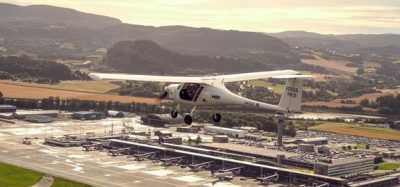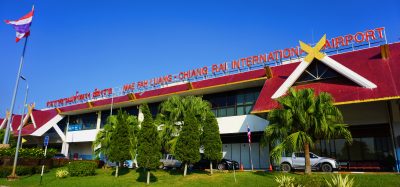The voice of the passenger is key to operating an airport effectively
- Like
- Digg
- Del
- Tumblr
- VKontakte
- Buffer
- Love This
- Odnoklassniki
- Meneame
- Blogger
- Amazon
- Yahoo Mail
- Gmail
- AOL
- Newsvine
- HackerNews
- Evernote
- MySpace
- Mail.ru
- Viadeo
- Line
- Comments
- Yummly
- SMS
- Viber
- Telegram
- Subscribe
- Skype
- Facebook Messenger
- Kakao
- LiveJournal
- Yammer
- Edgar
- Fintel
- Mix
- Instapaper
- Copy Link
Posted: 16 September 2019 | Jennifer Dandy - Dublin Airport, John Seely - Dublin Airport, Tara Nolan (International Airport Review) | No comments yet
New technologies – and the data they provide – can better inform decision making, keep operations up to date and ensure the passenger is content.


As airports across the world dedicate time and money into new technologies, International Airport Review endeavours to collate real-world cases to help inform the industry.
Here, we speak to John Seely, Technology Projects Manager and Jennifer Dandy, Performance Improvement Manager at Dublin Airport regarding what the Irish airport is investing in, how, and why.
How did you choose which technologies to implement in Dublin Airport?


It is important that we get maximum value from the technologies we deliver to ensure we allocate our limited resources in the best way, to help us operate efficiently while allowing the airport to grow in the long term. If we take queue measurement at security screening for example, the primary purpose is to provide accurate queue times, however by integrating real-time data into our corporate data warehouse, we can combine it with data from all the touchpoints/systems that impact security screening and deliver real-time business intelligence dashboards back to our control centres. This aids decisions to be made based on the best available and most up-to-date data.
How has the use of real-time passenger data affected strategy decisions?


For example, Dublin is a growing hub airport for passengers transferring to the United States. Its U.S. Pre-Clearance product is a key driver for that market and any efficiencies gained by real-time data will support growth. If we know that aircraft will be arriving late with U.S. bound transfer passengers, we can try and facilitate their connection through the terminal or plan for their destined aircraft to potentially go late off the parking stand. As we move towards an increase in the use of live data and an integrated operational response, this data will become increasingly valuable.
Which areas in Dublin Airport did the real-time passenger information highlight as needing the most improvement? How did you respond to this?
Jennifer Dandy: We are currently trialling the use of ‘Happy or Not’ real-time response data from six of our washroom blocks in Terminals 1 and 2. As we are only in the trial phase there is still a lot of work to do with the dataset but in the first few months we have used the results to better inform discussions between stakeholders, including consultations between the operations and asset care teams on how to tackle low performing washroom facilities.
As the operation develops its management of real-time data it will be able to efficiently allocate staff to areas that require additional attention at certain times of the day and ultimately it will meaningfully contribute to the success of the operation in real time.
The technology has enabled you to provide an outlet for the voice of the passenger. Did this ‘voice’ say anything unexpected? What were identified as the top three passenger demands?
Jennifer Dandy: The voice of the passenger is key to understanding how best to enhance the passenger experience. We use ‘Happy or Not’ data as a temperature check of how passengers are experiencing terminal processes as they proceed towards their gate. Not surprisingly, we have been able to correlate negative passenger responses to long queue times or during a time of irregular operations due to weather or outages.
Areas where we received unexpected negative responses included intervals when passengers had lengthy walk times with little to no visual stimulation. When we added graphics along the journey, we had increased positive feedback.
We have also integrated ‘Happy or Not’ responses with our BI tool and use them to provide an overall view of a terminal process. The data provides context for days when the operation performs better or worse than expected.


To what extent would you say new technologies are imperative to the success of airports?
John Seely: Dublin Airport passenger numbers have grown from 25 million in 2015 to 31.5 million in 2018 and we are working towards 40 million passengers by 2025. Technology will no doubt play a significant part in enabling us to achieve these targets while continuing to deliver a great experience for our passengers.
Collaboration and the sharing of data is certainly an area where I see technology playing a major role as access to the right information at the right time and delivering this to the right people is critical to the success of any airport operation. Harnessing these new technologies will enable us to better solve problems across the business.
I believe that Dublin Airport is already well advanced in this area, but we are always striving to improve and the recent introduction of A-CDM (Airport Collaborative Decision Making) and AVD (Airfield Visual Display) is already providing greater visibility of airfield operations.
Like a number of the major European airports we are also working on delivering iAOP (Initial Airport Operating Plan) and APOC (Airport Operating Centre). These projects will provide a single, common and collaboratively agreed rolling plan which will be available to all airport stakeholders.
Moving forward, what technologies do you predict will affect airport operations the most?
John Seely: When it comes to aviation technologies it is difficult to look too far into the future, but I believe the focus will be on the continued development of real-time data and predictive analytics which will help us maximise the benefits we hope to achieve with the introduction of iAOP and APOC. We will also need to adapt to emerging trends around technology in consumer expectations.
I believe we will also see a greater focus on technologies such as biometrics that will deliver increased automation and passenger choice and provide the passenger with a simpler and more enjoyable journey though the airport.
Related topics
Airport Collaborative Decision Making (A-CDM), Big data, Information technology (IT), New technologies, Passenger experience and seamless travel, Terminal operations
















